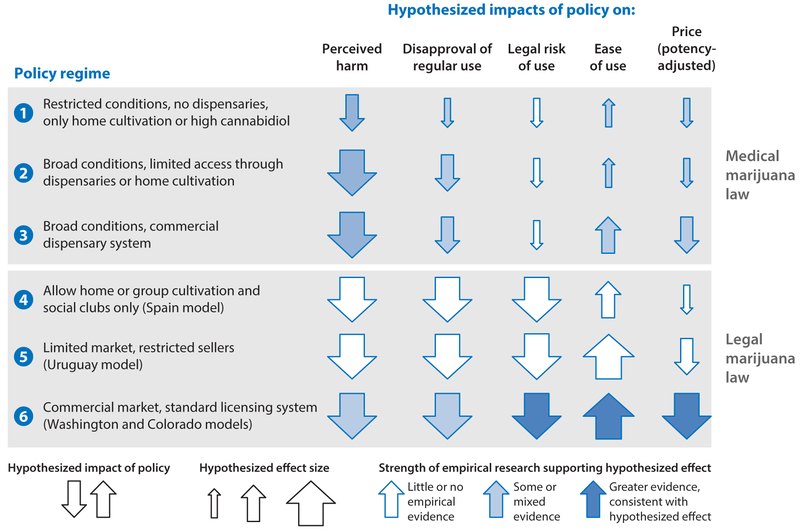Figure 2.
Mechanisms through which marijuana policies might affect marijuana use and use disorders. This simple illustration shows that even within a single policy area (e.g., medical marijuana), the different variations of the policy can differentially influence each of the mechanisms related to use. For example, we hypothesize that medical marijuana policies will ceteris paribus have a larger impact on people’s perceptions about the drug (perceived harm and disapproval of regular use) than they will have on the legal risk and ease of access to marijuana regardless of policy, assuming that only medical users are provided access and legal protections. Relatedly, because these markets serve a relatively smaller group of users, the overall impacts on price are presumed to be small, although they might increase with the third type of MML, which could allow for competitive forces among suppliers to start influencing price (Anderson et al. 2013, Humphreys 2016, Pacula et al. 2010) and potency (Sevigny et al. 2014) in these markets. The existing evidence generally suggests that the passage of any type of MML significantly lowers perceived harms among adults (Choi 2014, Khatapoush & Hallfors 2004) but not among adolescents (Choi 2014, Keyes et al. 2016). However, the expansion of commercial medical marijuana markets and increased exposure to medical marijuana after 2009 have been associated with significant reductions in adolescent perceptions of harm or disapproval associated with marijuana use (Miech et al. 2015, Schuermeyer et al. 2014, Sobesky & Gorgens 2016, Thurstone et al. 2011).

